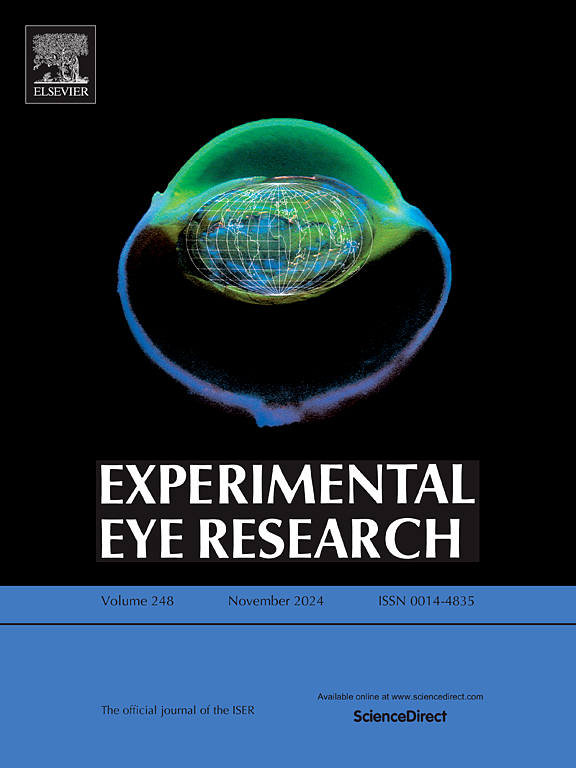The role of corneal nerves and neuromodulators in the immune response and healing processes of corneal infections
IF 2.7
2区 医学
Q1 OPHTHALMOLOGY
引用次数: 0
Abstract
The integrity of corneal nerves is essential for maintaining corneal health; however, microbial keratitis caused by Acanthamoeba, fungi, bacteria, and viruses disrupts corneal neuroimmune homeostasis. Advanced imaging of the human cornea and animal models has revealed changes in the corneal subbasal nerve plexus, even in Acanthamoeba and fungal corneal infections. Moreover, corneal nerve regeneration in microbial keratitis relies on neurotrophins, regeneration-associated genes, and nerve guidance molecules. The damage to corneal nerves in microbial keratitis seems to stem from corneal neuroimmune responses or direct pathogen effects. While neuromodulators play a role in corneal healing, the complexity of corneal neuroimmune interactions and the multifactorial nature of infections may complicate establishing definitive therapeutic protocols. Research into the pathological changes and regenerative processes in corneal nerves is ongoing, and it could significantly enhance therapeutic strategies in microbial keratitis, offering hope for better patient outcomes.
角膜神经和神经调节剂在角膜感染的免疫反应和愈合过程中的作用
角膜神经的完整性对维持角膜健康至关重要;然而,由棘阿米巴、真菌、细菌和病毒引起的微生物性角膜炎会破坏角膜神经免疫稳态。人类角膜和动物模型的先进成像显示角膜基底下神经丛的变化,甚至在棘阿米巴和真菌角膜感染中也是如此。此外,微生物性角膜炎的角膜神经再生依赖于神经营养因子、再生相关基因和神经引导分子。微生物性角膜炎对角膜神经的损害似乎源于角膜神经免疫反应或直接的病原体作用。虽然神经调节剂在角膜愈合中发挥作用,但角膜神经免疫相互作用的复杂性和感染的多因素性质可能使建立明确的治疗方案复杂化。对角膜神经的病理变化和再生过程的研究正在进行中,它可以显著改善微生物角膜炎的治疗策略,为患者提供更好的治疗效果。
本文章由计算机程序翻译,如有差异,请以英文原文为准。
求助全文
约1分钟内获得全文
求助全文
来源期刊

Experimental eye research
医学-眼科学
CiteScore
6.80
自引率
5.90%
发文量
323
审稿时长
66 days
期刊介绍:
The primary goal of Experimental Eye Research is to publish original research papers on all aspects of experimental biology of the eye and ocular tissues that seek to define the mechanisms of normal function and/or disease. Studies of ocular tissues that encompass the disciplines of cell biology, developmental biology, genetics, molecular biology, physiology, biochemistry, biophysics, immunology or microbiology are most welcomed. Manuscripts that are purely clinical or in a surgical area of ophthalmology are not appropriate for submission to Experimental Eye Research and if received will be returned without review.
 求助内容:
求助内容: 应助结果提醒方式:
应助结果提醒方式:


